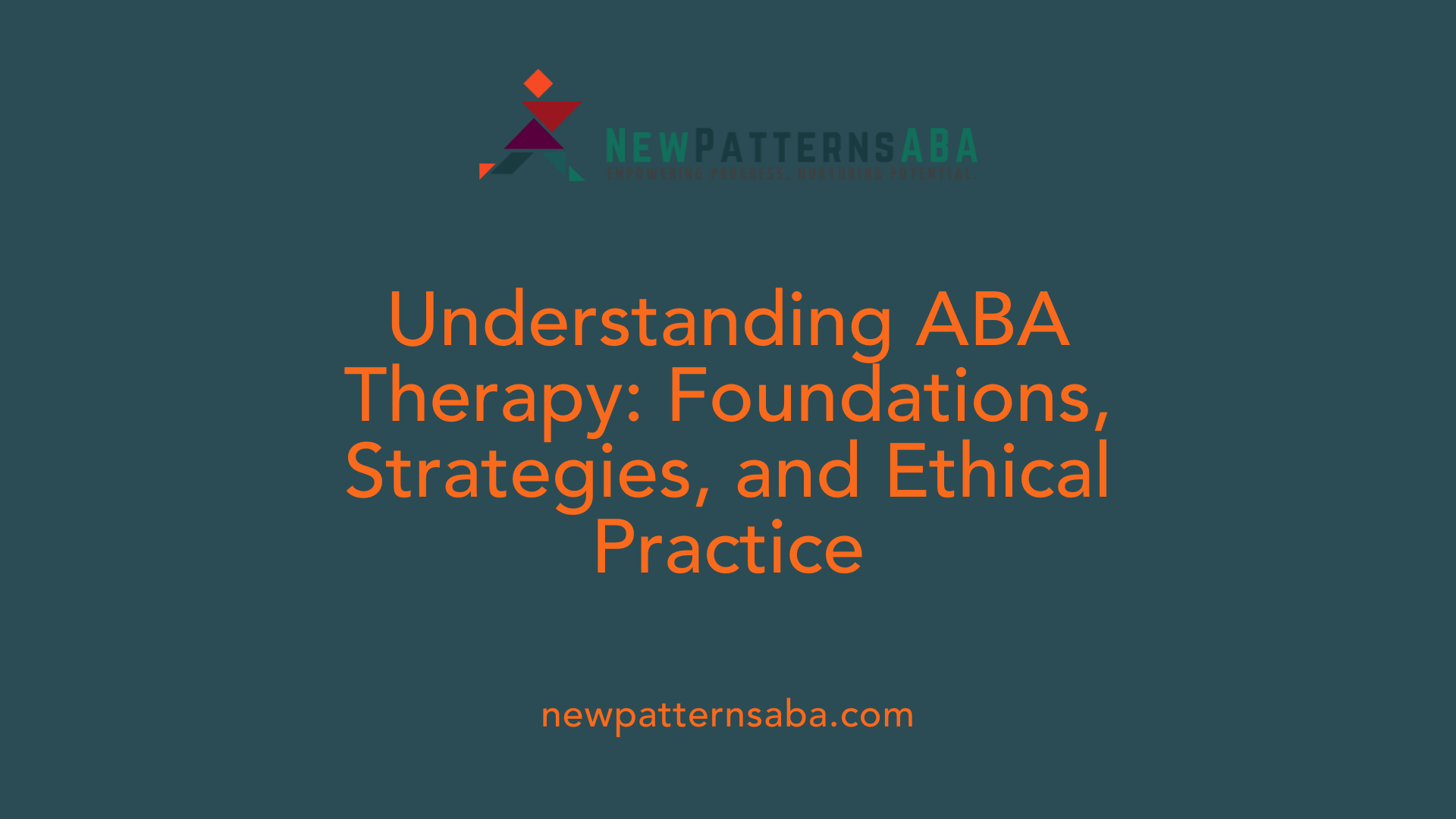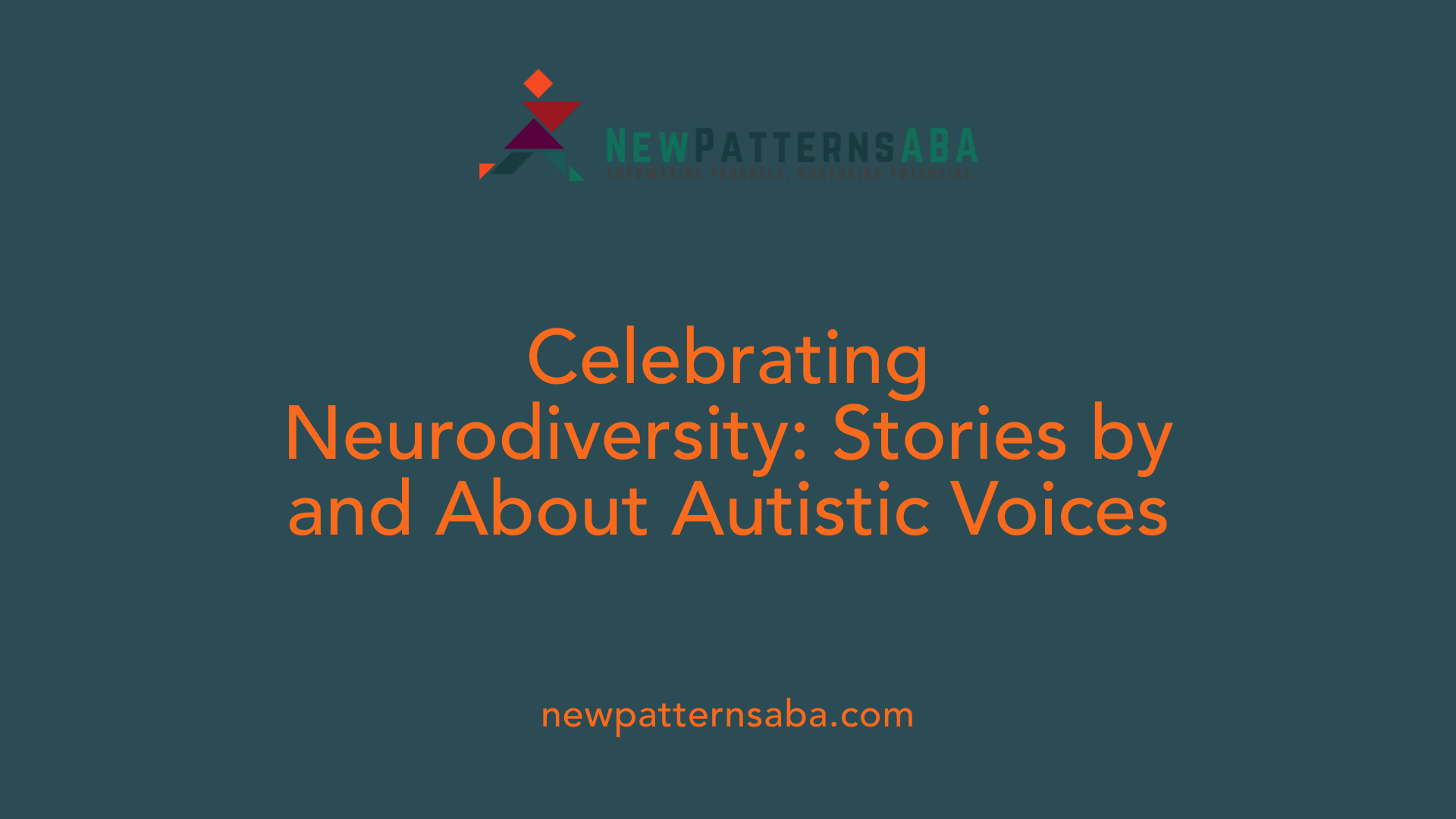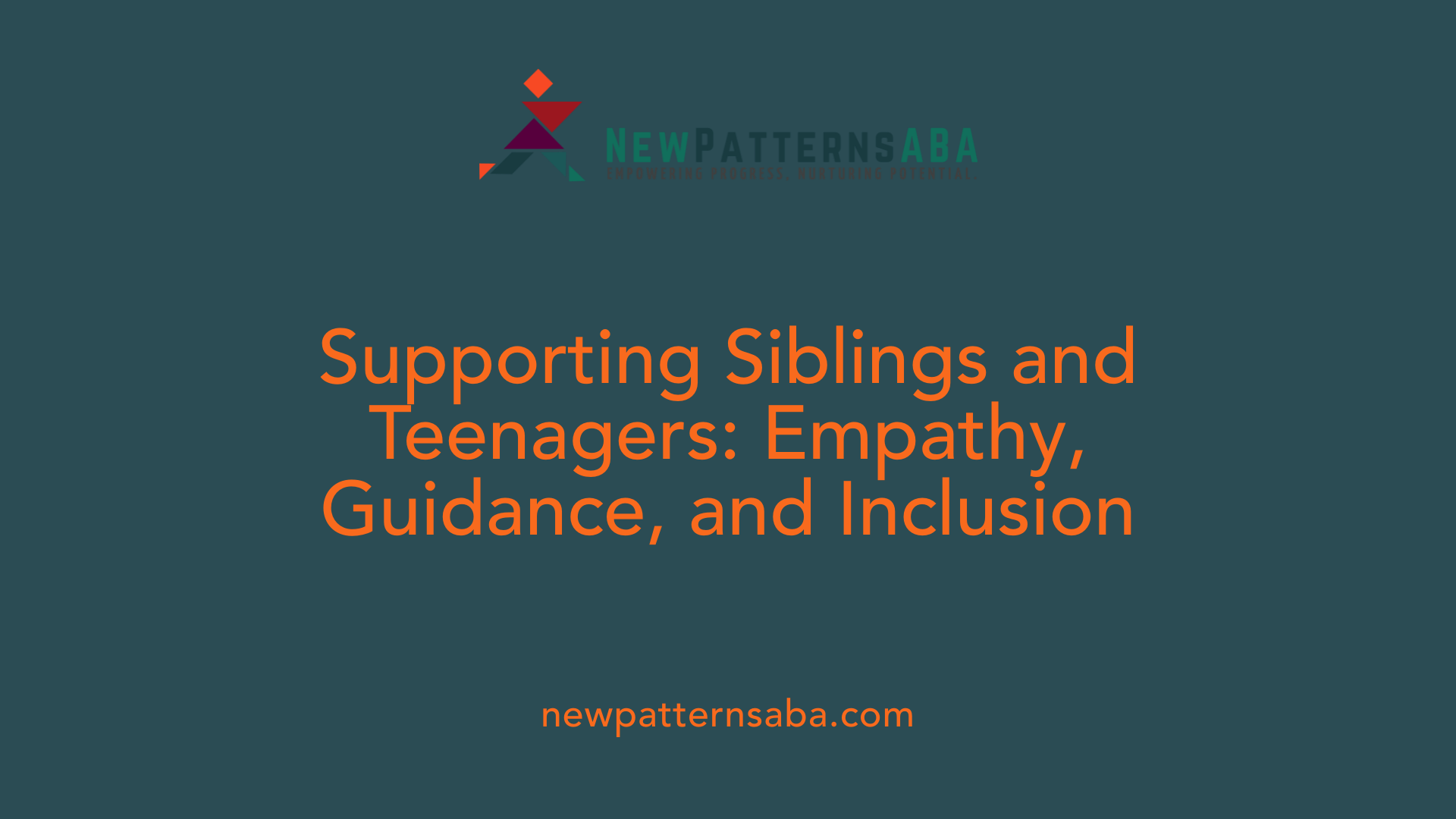Understanding Autism Through Books: A Gateway to Awareness and Support
Books serve as vital tools in fostering understanding, empathy, and acceptance of autism spectrum disorder (ASD) among children, parents, educators, and therapists alike. This article highlights a range of recommended books that inform about autism in children, supporting both awareness and behavioral therapy practices such as Applied Behavior Analysis (ABA). By exploring titles written by experts, autistic authors, and through picture books designed for young readers, these resources offer insights into the diverse experiences and strengths of individuals on the autism spectrum.
Authoritative Guides to Autism Spectrum Disorders for Parents and Professionals
Essential Books Offering Comprehensive Perspectives on Autism
Several authoritative books stand out as valuable resources for both parents and professionals seeking a thorough understanding of autism spectrum disorders (ASD). These works provide in-depth information about autism's core symptoms, individual differences, and practical treatment approaches that facilitate effective intervention and support.
Exploring Individual Differences and Treatment Methods
Bryna Siegel's two notable books, The World of the Autistic Child and Helping Children with Autism Learn, delve into the diverse ways autism can manifest. Siegel emphasizes the importance of recognizing individual differences across social communication, leisure, and daily living skills. She also highlights a range of intervention strategies, including Applied Behavior Analysis (ABA) and the TEACCH curriculum, which cater to the unique needs of each child.
Tony Attwood's Comprehensive Approach to Asperger's Syndrome
Tony Attwood's The Complete Guide to Asperger’s Syndrome provides an updated and detailed exploration of Asperger’s syndrome across the lifespan. His work focuses on how the condition impacts social, emotional, and academic functioning, offering insights essential for targeted support. Attwood’s guide is particularly valuable for understanding the nuanced challenges and strengths associated with this form of autism.
Supporting Families and Professionals Alike
These authors craft their works to be accessible and informative to both caregivers and practitioners. By offering evidence-based knowledge and practical advice, these books support informed decision-making and personalized intervention planning. Together, they foster a deeper understanding of ASD and encourage approaches that respect the individuality of each child on the spectrum.
Applied Behavior Analysis (ABA) Therapy: Foundations and Practical Literature

What is Applied Behavior Analysis (ABA) therapy and how is it used to treat autism?
Applied Behavior Analysis (ABA) therapy is a scientifically validated, evidence-based treatment primarily used to support children with autism spectrum disorder (ASD). It focuses on understanding how environmental factors influence behavior and employs reinforcement techniques to encourage positive behaviors while reducing challenging ones. ABA interventions are tailored to each individual's needs, relying on meticulous data collection and analysis to adjust strategies for maximum effectiveness.
Key books explaining ABA principles and ethical considerations
Several authoritative texts offer insight into ABA's foundational principles and ethical practice. Notably, Ethics for Behavior Analysts by Jon Bailey and Mary Burch provides practical guidance and real-world examples aligning with the Behavior Analyst Certification Board (BACB) Code of Ethics. B.F. Skinner's seminal work, Science and Human Behavior, remains fundamental for understanding the theoretical underpinnings of behavior analysis.
For practical strategies, No More Meltdowns by Jed Baker offers parent-focused approaches for managing difficult behaviors using ABA frameworks. The Handbook of Applied Behavior Analysis is a comprehensive resource that addresses intervention methods, ethical concerns, and recent research developments. Additionally, Applied Behavior Analysis: 50 Case Studies in Home, School, and Community Settings illustrates ABA application via real-life stories, highlighting the versatility of ABA across environments.
Role of ABA in supporting children with autism
ABA therapy plays a crucial role in helping children with ASD develop communication, social, and daily living skills. Therapists use techniques such as Discrete Trial Training (DTT), Pivotal Response Treatment (PRT), and the Early Start Denver Model (ESDM) to create engaging, structured, and naturalistic learning experiences. Early and intensive ABA interventions have been linked to significant improvements in language acquisition, adaptive behavior, and social engagement.
ABA also emphasizes partnering with families and educators to encourage consistency across home and school settings, enhancing generalization of skills. The approach is committed to ethical delivery, guided by professional standards and codes, ensuring respectful and supportive treatment.
| Aspect | Description | Representative Books and Authors |
|---|---|---|
| Definition and Purpose | ABA uses learning and behavior science to promote positive skills and reduce problem behaviors. | Science and Human Behavior - B.F. Skinner |
| Ethical Practice | Application of ABA must align with ethical guidelines to protect client dignity and rights. | Ethics for Behavior Analysts - Bailey & Burch |
| Practical Strategies | Techniques include DTT, PRT, and frameworks for managing meltdowns and behavioral challenges. | No More Meltdowns - Jed Baker |
| Case-Based Learning | Real-life cases provide insight into applying ABA in diverse environments for effective intervention. | Applied Behavior Analysis: 50 Case Studies |
| Impact on Autism Treatment | Early, intensive ABA improves communication, social skills, and adaptive functioning in children with ASD. | Various comprehensive ABA texts |
Providers of ABA Therapy: Professionals Behind the Support
Who provides ABA therapy for individuals with autism?
ABA therapy is delivered by a team of trained professionals specialized in behavioral interventions for autism. The primary providers include Board Certified Behavior Analysts (BCBAs), Registered Behavior Technicians (RBTs), and assistant Behavior Analysts (BCaBAs).
Roles of BCBAs, RBTs, and BCaBAs
Board Certified Behavior Analysts (BCBAs): BCBAs hold at least a Master’s degree and are responsible for conducting detailed assessments such as Functional Behavior Assessments. They develop individualized treatment plans based on these assessments, closely monitor progress, and supervise the therapy team.
Registered Behavior Technicians (RBTs): RBTs provide direct one-on-one ABA therapy under the supervision of BCBAs. They implement intervention strategies, collect data on behaviors, and interact directly with the child to promote skill development.
Assistant Behavior Analysts (BCaBAs): BCaBAs work as intermediate-level practitioners who assist BCBAs in designing and reviewing interventions and sometimes supervise RBTs under BCBA oversight.
Settings and supervision in ABA therapy
ABA therapy can take place in a variety of environments such as homes, schools, clinics, or community settings. This flexibility allows the therapy to be adapted to the child's specific developmental context. Continuous supervision by BCBAs ensures treatment fidelity and adapts programs as needed. Treatment plans are tailored uniquely to each child’s profile, emphasizing early intervention and family involvement to enhance outcomes.
Insurance plans often cover ABA when medically necessary, making these services accessible for many families. Overall, the coordinated efforts of BCBAs, BCaBAs, and RBTs form the foundation of effective ABA therapy delivery for children with autism spectrum disorder.
Benefits of ABA Therapy: What Families and Children Can Expect

What benefits can individuals with autism expect from receiving ABA therapy?
Applied Behavior Analysis (ABA) therapy offers numerous benefits for individuals with autism, helping improve communication, social skills, and daily living abilities. Through personalized and structured interventions, ABA focuses on teaching essential skills like toileting, dressing, and emotional regulation, enhancing the child's independence and quality of life.
ABA therapy also excels in behavior management by promoting positive behaviors and reducing those that may be harmful or disruptive. Families often appreciate the clear strategies ABA provides for managing meltdowns or challenging behaviors, fostering a calmer and more supportive environment.
Early intervention with ABA therapy is particularly valuable. Starting therapy at a young age can lead to substantial developmental gains, often allowing children to better integrate into school and community settings. Early ABA involvement increases the chances of acquiring vital skills that reduce the need for long-term support.
Overall, ABA therapy is tailored to each child's unique needs, frequently involving families as active partners. Progress is measured carefully through data collection to ensure meaningful development. This evidence-based approach supports children with autism in reaching their full potential, promoting independence and improved participation in daily life.
Structuring ABA Therapy Programs: Goals, Techniques, and Family Involvement
How is an ABA therapy program typically structured?
An ABA therapy program begins with a detailed assessment carried out by a Board Certified Behavior Analyst (BCBA). This evaluation identifies a child’s strengths and challenges emphasizing individual needs, which shapes a personalized treatment plan. The plan includes clear, measurable goals focusing on improving communication, social skills, and daily living while reducing undesirable behaviors.
Key techniques used in ABA therapy
Several evidence-based intervention methods form the core of ABA therapy:
- Discrete Trial Training (DTT): A structured teaching approach that breaks down skills into simple, repeated steps.
- Natural Environment Teaching (NET): Learning happens in real-life settings to foster generalization of skills.
- Pivotal Response Treatment (PRT): Targets pivotal areas like motivation and self-management to produce broad improvements.
- Early Start Denver Model (ESDM): Designed for very young children, integrating play and developmental interaction.
These techniques use positive reinforcement to encourage and establish desired behaviors.
Importance of data-driven adjustments and family participation
Data collection during sessions is critical to monitor progress and adapt goals or strategies promptly. Therapy sessions often occur at home, school, or clinic settings, ensuring consistency across environments.
Family involvement is vital throughout the therapy journey. Parents and caregivers participate actively, learn supportive strategies, and help maintain consistency, which enhances the effectiveness of the interventions.
Early intensive intervention, generally started before the age of four, is linked with the best outcomes, emphasizing the importance of timely therapy initiation.
Children’s Picture Books: Promoting Autism Awareness and Inclusivity Early On
Value of Picture Books for Teaching Empathy and Acceptance
Picture books about autism serve as powerful tools in elementary classrooms by fostering empathy and acceptance among young students. They provide accessible narratives that help children understand neurodiversity and appreciate the uniqueness of peers with autism spectrum disorder (ASD). By introducing these books early, teachers can encourage inclusive attitudes and reduce stigma, supporting a positive school environment.
Addressing Autism Characteristics Through Stories
These picture books often highlight general traits associated with autism, such as stimming behaviors, social anxieties, and sensory sensitivities. Importantly, the stories also emphasize individual differences, strengths, and talents of autistic children, avoiding stereotypes. Titles like All My Stripes: A Story for Children with Autism showcase how unique qualities can be embraced, promoting a strengths-based perspective.
Encouraging Inclusive Classroom Discussions
Using these books effectively means guiding conversations that explore themes of acceptance, communication, and understanding labels. Teachers can initiate meaningful discussions about the spectrum of behaviors and feelings experienced by children with autism. Engaging parents in these conversations further helps build a supportive community that values diversity and inclusivity within the classroom and beyond.
Books Written by Autistic Authors and About Unique Strengths on the Spectrum

Insights from Autistic Perspectives
Books penned by autistic authors provide valuable first-hand insights into autism, helping readers understand the experiences and viewpoints of those on the spectrum. One notable title is The Reason I Jump by Naoki Higashida, which offers an intimate look at autism from a young autistic author's perspective, fostering empathy and deeper understanding among families, educators, and therapists.
Titles Highlighting Talents and Strengths
Several books focus on the unique abilities and talents of individuals with autism, emphasizing strengths rather than challenges. For example, All My Stripes: A Story for Children with Autism explores themes of identity and self-acceptance through the metaphor of stripes. Similarly, Nathan’s Autism Spectrum Superpowers and Unicorns from Outer Space celebrate exceptional qualities and encourage positive views of neurodiversity.
Fostering Self-Understanding and Acceptance
Books in this category aim to promote awareness and acceptance both within autistic children themselves and their broader communities. They help children appreciate their individuality and foster confidence. These stories and narratives support the development of self-understanding while encouraging inclusive attitudes among peers and family members, ultimately contributing to more supportive environments for children on the spectrum.
Books for Siblings and Teenagers: Supporting a Broader Autism Community

Resources for siblings to understand and support
Siblings of children with autism have unique needs and can greatly benefit from books that help them understand and support their autistic brothers or sisters. Titles like Everybody is Different and My Brother Charlie are particularly recommended. These books provide relatable stories and explanations that foster empathy and strengthen family bonds, offering siblings a positive way to engage with their family's autism experience.
Guides addressing social and emotional challenges for teens
Teenagers on the autism spectrum face distinct social and emotional challenges. Books such as The Survival Guide for Kids with Autism Spectrum Disorders and Anything But Typical offer guidance tailored to this age group. These resources focus on developing social skills, managing emotions, and navigating the complexities of adolescence with confidence and self-awareness.
Educational support materials for school settings
In schools, creating an inclusive environment is essential. Educational books like A Friend Like Simon and Uniquely Wired aid teachers and peers in fostering better social understanding and acceptance of autism. These resources are designed to promote positive interactions and inclusivity among classmates, helping children with autism feel more supported in their educational journey.
Effective use of these books encourages open communication, empathy, and acceptance across the broader autism community, supporting not just individuals with autism but their families and peers as well.
Educational Resources for Teachers and Caregivers: Enhancing Understanding and Support

Books to aid teachers in fostering inclusivity
Teachers looking to promote inclusivity and understanding of autism in their classrooms can use a variety of books designed for different age groups and purposes. Picture books such as All My Stripes: A Story for Children with Autism and Nathan’s Autism Spectrum Superpowers highlight the unique abilities of autistic children, helping peers develop empathy and acceptance. Titles like A Friend Like Simon and Uniquely Wired are particularly useful for school-age children to foster social understanding and support inclusivity.
Books aimed at siblings, including Everybody is Different and My Brother Charlie, can also support family inclusiveness by helping siblings better understand and support their autistic brothers or sisters.
Guidance on tailored reading instruction for children with autism
Teaching reading to children with autism requires tailored, engaging, and interactive approaches. Resources emphasize that individualized instruction that addresses the learning differences seen in autism—such as challenges with communication and social skills—is essential. Using books that align with children’s developmental stages and interests can enhance motivation and engagement.
Books like Helping Children with Autism Learn by Bryna Siegel discuss intervention strategies incorporating Applied Behavioral Analysis (ABA) and other curricula, highlighting the importance of customizing learning techniques to meet individual needs.
Recommendations for integrating autism awareness in school curricula
Integrating autism awareness into school curricula can be effectively supported by incorporating books that describe the spectrum's diversity and the challenges faced by autistic individuals without stereotyping. Teachers are encouraged to use books that cover characteristics such as stimming behaviors and social anxieties while promoting strengths and individuality.
Discussions prompted by these books can focus on acceptance, respecting differences, and communicating the importance of inclusion. Collaboration with parents is recommended to create a supportive classroom environment that aligns with students’ home experiences and needs.
These educational resources collectively provide evidence-based knowledge and practical tools to help teachers and caregivers support children with autism, fostering understanding, acceptance, and a more inclusive learning environment.
Empowering Through Knowledge: The Role of Books in Autism Awareness and Therapy
Selecting the right books to foster autism awareness is a crucial step toward creating inclusive, empathetic environments for children on the spectrum. From authoritative guides and ABA therapy manuals to engaging picture books and heartfelt stories by autistic authors, these resources equip parents, professionals, educators, and peers with the tools to understand and support children with autism comprehensively. When integrated into therapy and education, such reading materials complement behavioral approaches, enrich social understanding, and promote acceptance. Ultimately, the journey toward awareness and effective support begins with informed reading—laying the foundation for acceptance, empowerment, and meaningful inclusion of children with autism in all aspects of life.





